It’s no surprise that Kawasaki is making a bit of a fuss about this year being the 50th anniversary of its Z range, by producing special-edition versions of several naked four-cylinder models. After all, the original Z1 that began the story back in 1972 wouldn’t merely score highly in any poll to determine the Japanese firm’s greatest ever bike, it would make the short list for finest superbike from any manufacturer, ever.
On the Z1’s unveiling in 1972, its 903cc, dohc four-cylinder engine was in a different class to the single-cam unit of Honda’s CB750, which had established the superbike category on its arrival three years earlier. With a maximum output of 82bhp and a top speed of over 130mph, the Kawasaki effortlessly outmuscled the 15bhp less powerful Honda and, frankly, anything else on the road.

Equally usefully to Kawasaki in its current anniversary celebrations, the Z1 was a visually striking machine. Its colour combinations of green and yellow or brown and orange, as distinctively Seventies as tank tops and flares, received a mixed reception at the time – likely distressing some of the old guard. Half a century later, viewed through a nostalgia-tinted visor, they seem gorgeous.
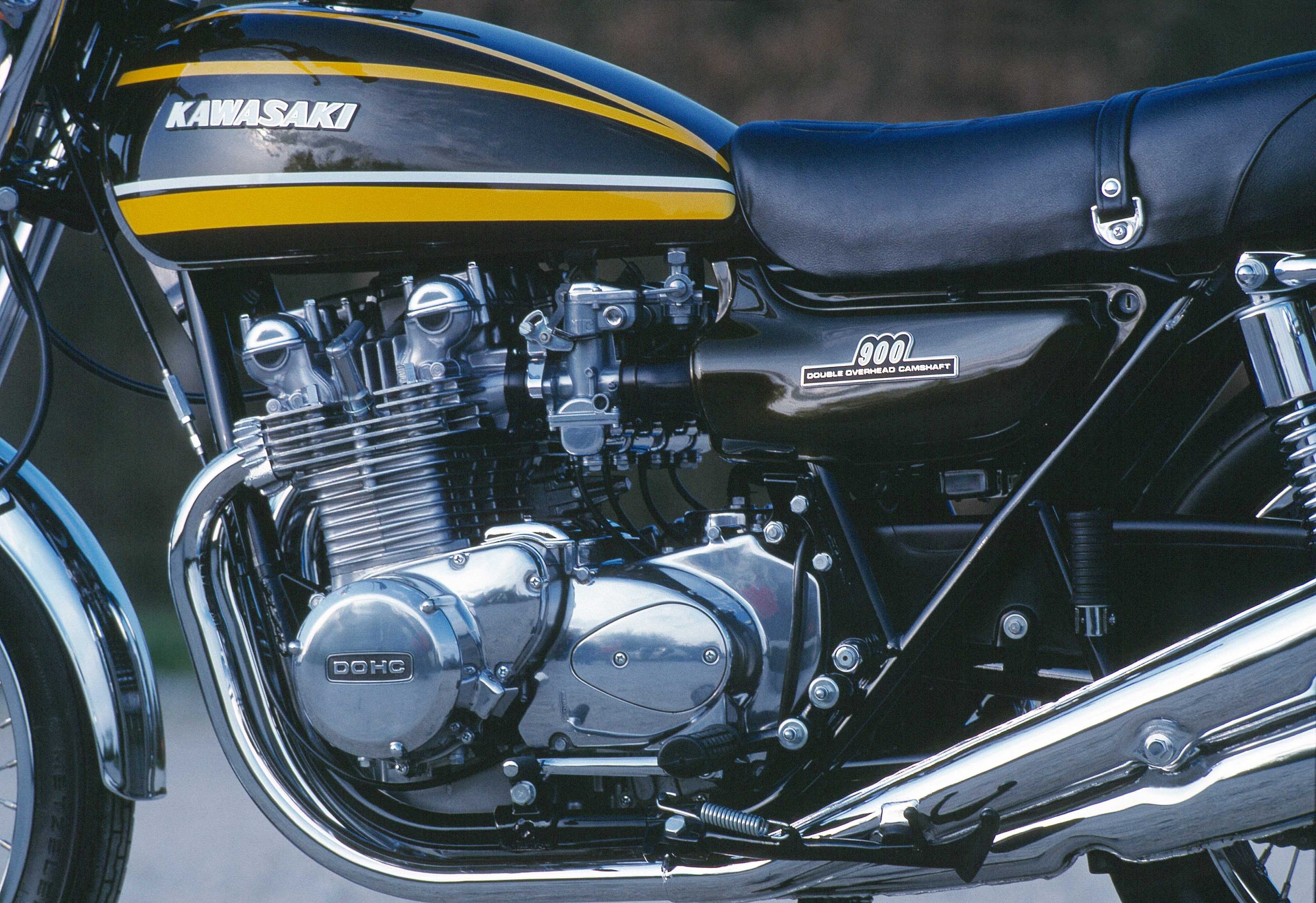
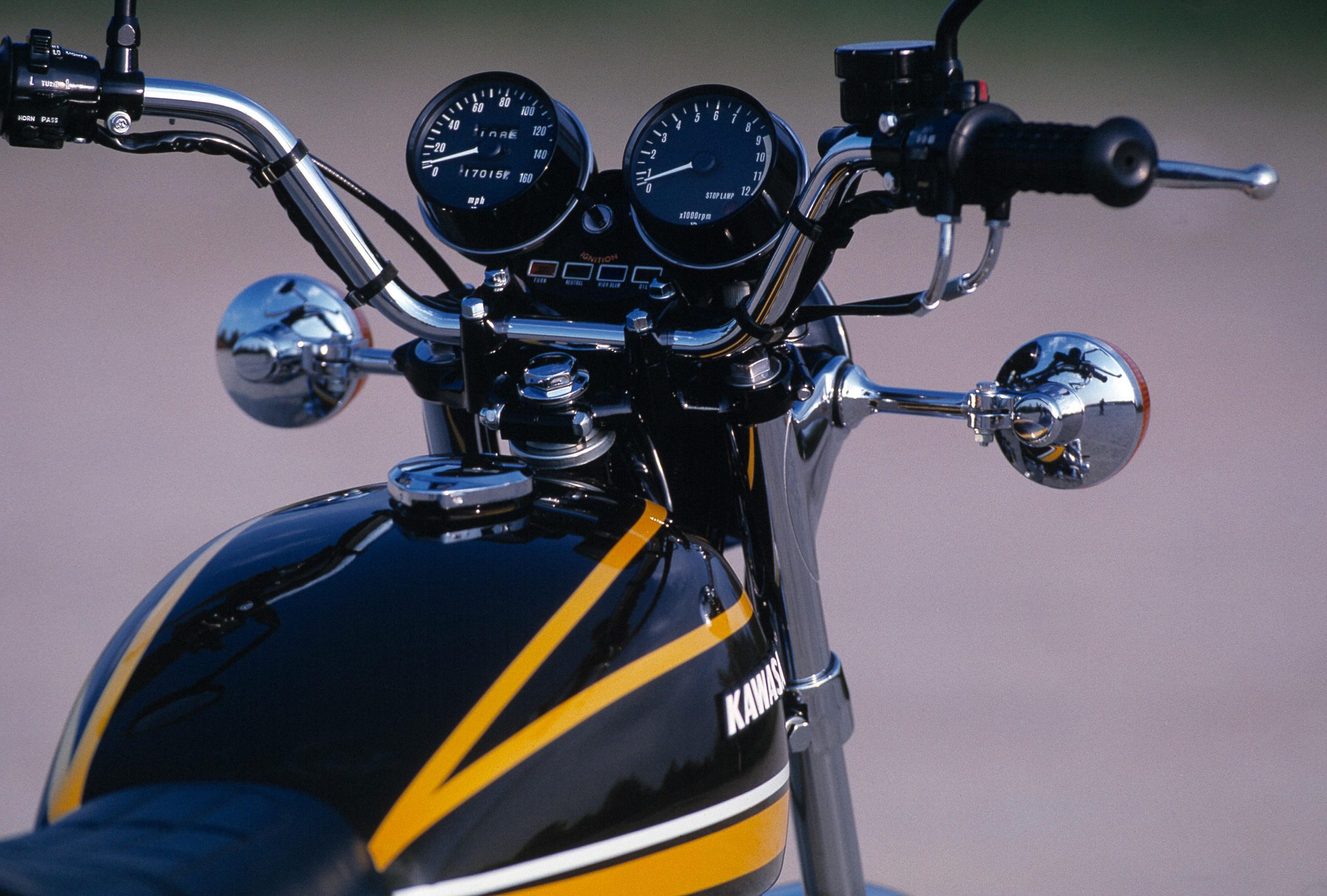
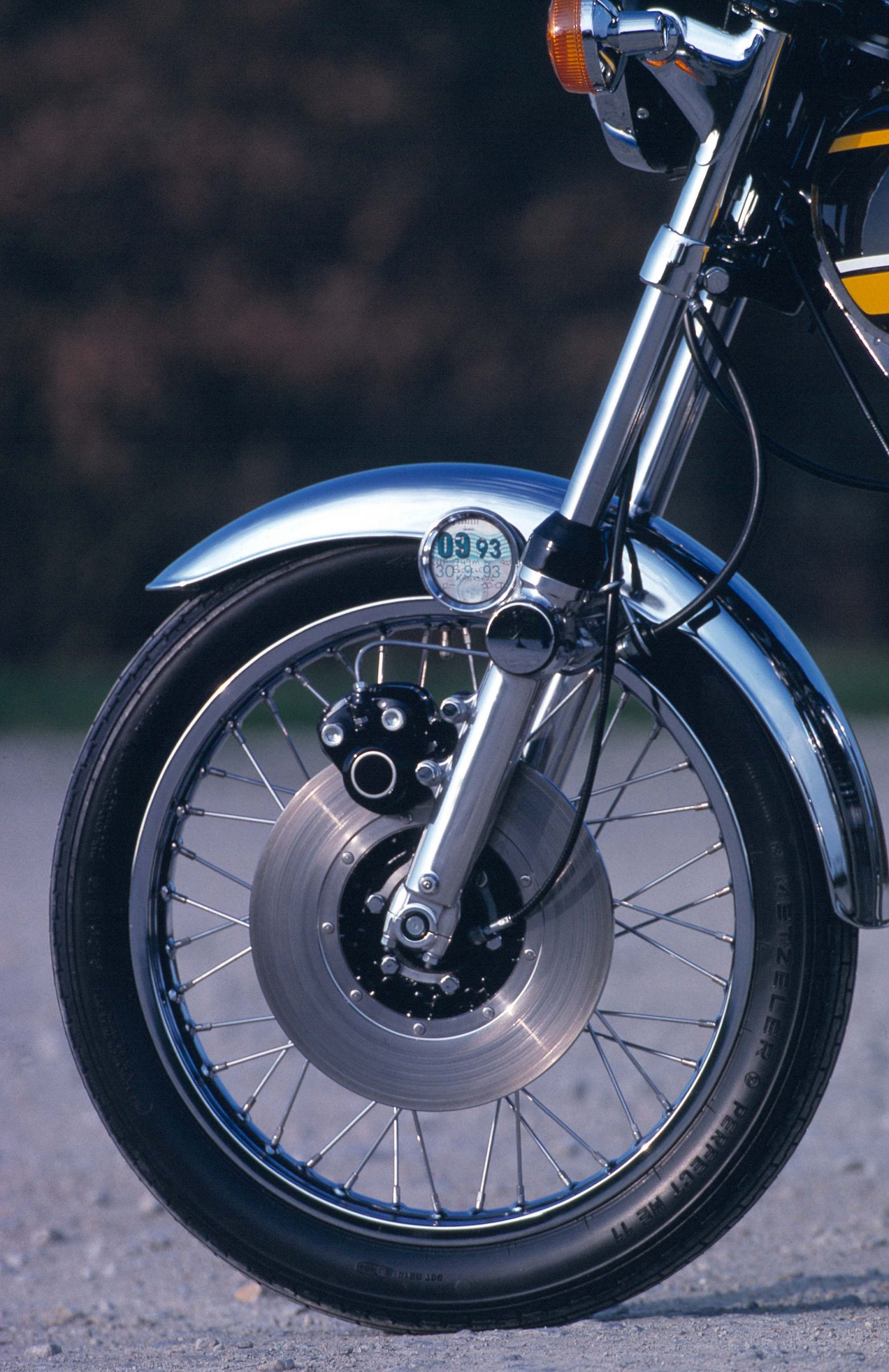
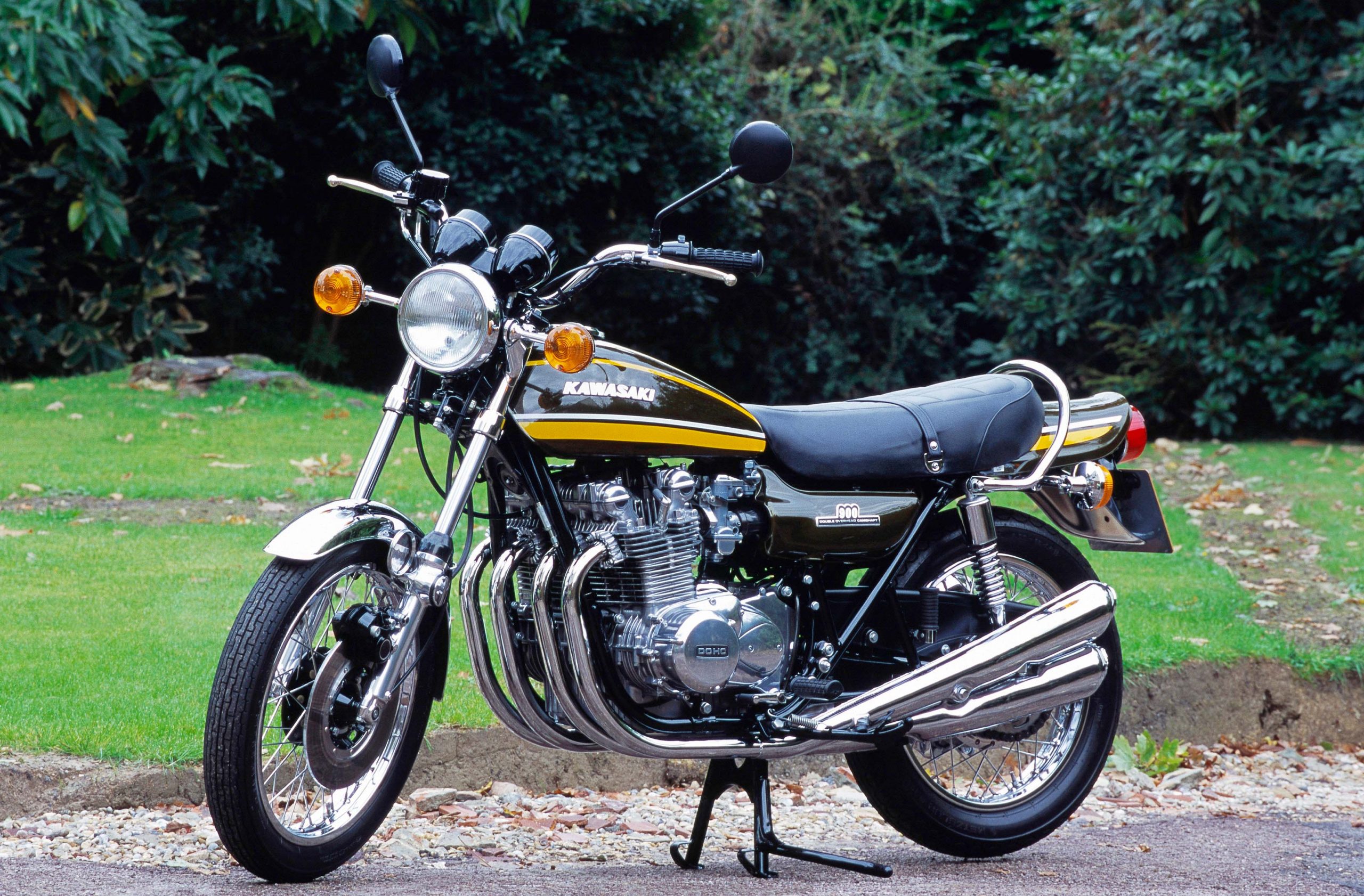
The modern Z900RS replicates those shades but struggles to match the elegance of the old warrior, with its shapely tank and sidepanels, duck-tail rear end and air-cooled hunk of engine with its quartet of shiny silencers. Not to mention the high handlebars that confirmed the Z1 was intended mainly for the laid-back US market, and which ensured that riders making the most of its performance would require arms like Popeye’s. That and plenty of courage to cope with the fact that its chassis wasn’t at the same level as its mighty engine, so handling could be distinctly, ahem, interesting.
Still, why worry about that, when given the chance of a ride of this immaculate Z1-A model, pictured, from 1974, owned for more than 30 years by Paul Scanlon, a multi award-winning bike restorer? The big Kawasaki’s improbably relaxed riding position merely adds to the thrill, as you straddle the thick dual-seat and look out over the simple dashboard layout of twin clocks with warning lights in the centre.
When the motor fires up there’s a reminder of one sensation lost to riders of modern, muted motorcycles, as the Z1 burbles through those four pipes with a menacing sound. The throttle and clutch are light; typically Japanese in their efficiency.
Although the bike itself is heavy, at around 250kg, it’s low enough to feel fairly manageable. Carburation is crisp, the five-speed gearbox is slick, and the big, torquey motor pulls fairly smoothly from 3000rpm in top gear. At a gentle pace there’s more vibration than from most modern fours, enough to blur the mirrors much of the time, but the ride is acceptably smooth, and the bike seems comfortable and pleasant.
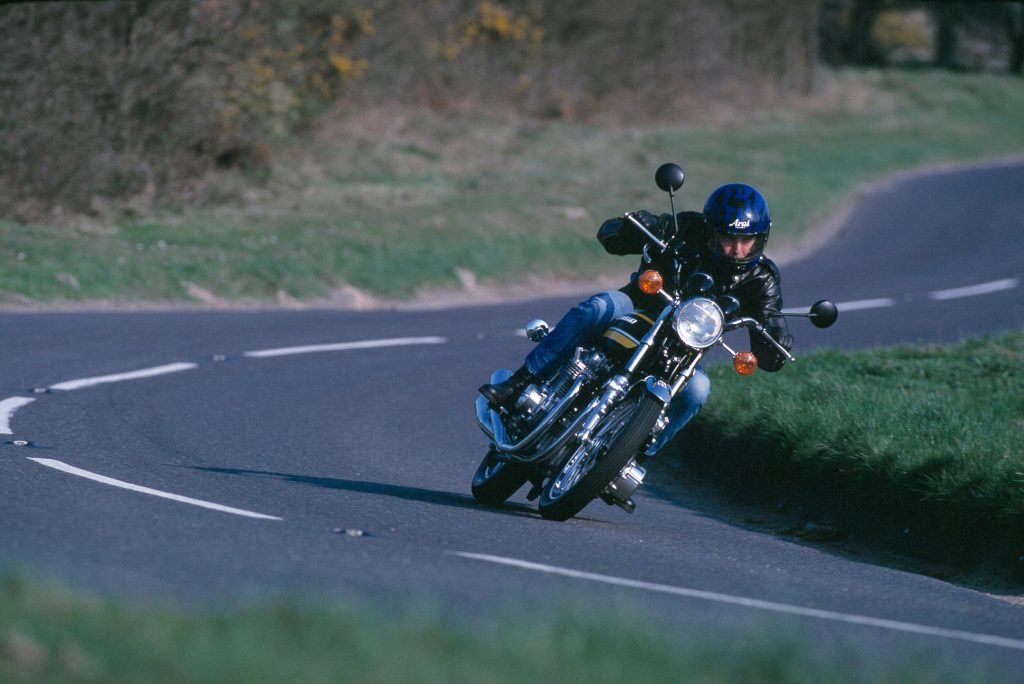
Until you crack open the throttle. Then the Z1 storms forward with an arm-wrenching surge of acceleration that is thrilling now and must have been mind-blowing back in the day. There’s a raw urgency to the power delivery that still sends a tingle down the inside of your leather jacket.
And the handling helps to make the ride exciting. The tubular steel frame was strong enough to cope with the engine’s power – but only just. During my short ride, the bike didn’t misbehave seriously enough to become worrying. But at higher speeds its slightly vague steering did little to inspire confidence.
Fitment of a steering damper was a popular modification at the time, as was upgrading the rear shock units, which rapidly lost damping control during committed riding. Handling at slower speeds was better, although the bike needed plenty of pressure on its wide handlebars for rapid changes of direction.
The standard single front disc brake was respectably powerful but required a firm squeeze of the lever. Hard riders were tempted by Kawasaki’s twin-disc conversion although this cost almost £100 in 1973, when the complete bike sold for £1088. (You’ll have to pay a lot more than that now; clean Z1s sell for over £20,000 and restored examples in this bike’s condition are worth half as much again.)
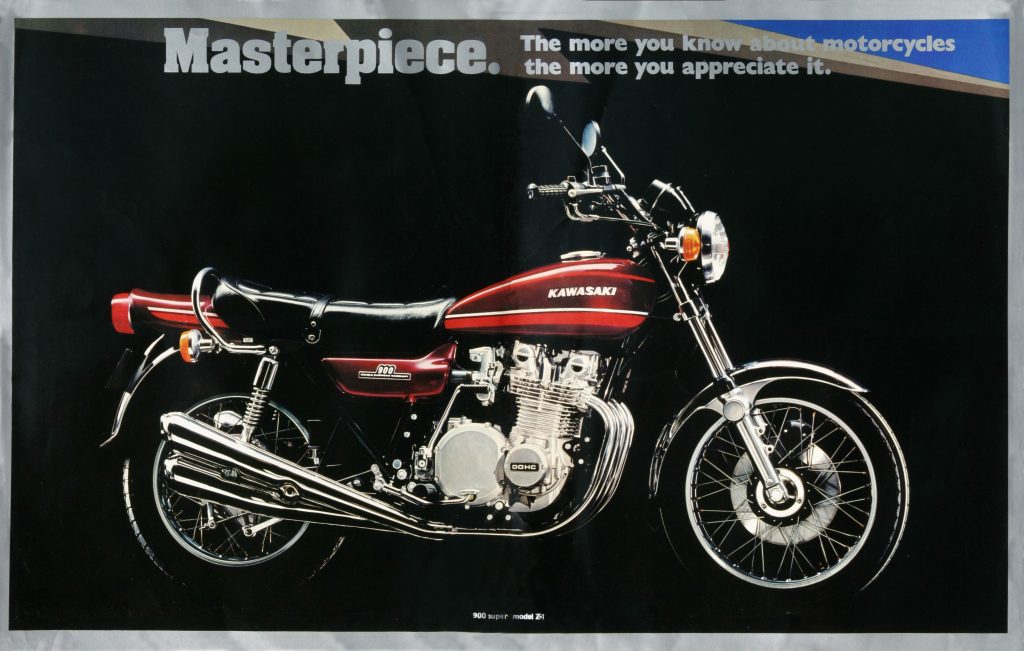
That competitive price helped make the Z1 a hit when launched, although eager UK riders had to be patient because most early bikes went to the US. Kawasaki initially planned to produce 1500 units per month, but was still building and selling more than three times as many in 1975.
The Japanese firm was slow to update its flagship, merely making detail changes in the first couple of years, with models designated Z1-A and B. For 1976 the second front brake disc was fitted as standard, and the engine was detuned slightly to reduce emissions – an issue even then. The resultant model was called the Z900.
The name had changed and the motor had lost a horsepower or two but the Zed was still arguably the fastest, meanest motorcycle on the road. Even more importantly for Kawasaki, it had earned the marque a reputation for four-cylinder performance and strength.
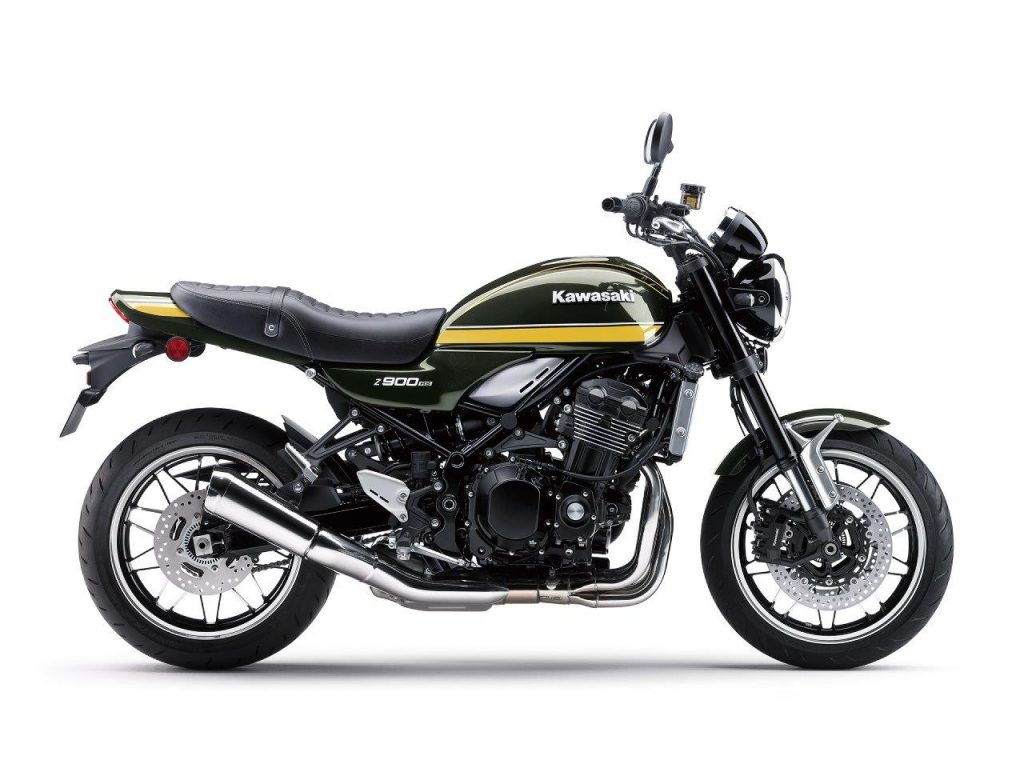
Smaller and larger derivatives would follow, with 16-valve heads and liquid-cooling extending a line that leads all the way to the current range. Many have been successful, but none has had remotely the impact of the Z1. No wonder Kawasaki is producing tribute acts to celebrate its 50th birthday.
If any motorcycle deserves a party in this year of the Royal Anniversary, it’s the bike they called the King.
1973 Kawasaki Z1
You’ll love: Timeless style, four-pot power
You’ll curse: Price, high-speed handling
Buy it because: Legend that’s still fighting fit at 50
Condition and price range: Project: £7000; Nice ride: £16,000; Showing off: £25,000
Engine: Aircooled DOHC four-cylinder
Capacity: 903cc
Power: 82bhp @ 8500rpm
Weight: 246kg with fluids
Top speed: 135mph
Read more
Back to riding school with Maria Costello
6 of the most significant motorcycle sales in 2021
Teenage kicks: The Kawasaki H2 and Suzuki GT750 are revving up like it’s 1972 again









Yes they are legend . I have one in the shed 1976 original pipes owners manual very tidy 28000 km
After a couple of years, I swapped my Yellow CB750 Honda for a yellow and Green Z900, both bought new. The Honda was supper smooth, but the Z900 had the power, although was twitchy at speed and very heavy to pick up if you laid it down. Fortunately, although rode hard, I never had any accidents or mechanical faults on either bike. 😎
Poor old Honda. The Honda CB750 had changed the world, but even the smaller four cylinder Kawasaki Z650 of the time was a better bike. I owned both together, and whilst the Honda was a “Mercedes” of a motorcycle, each Kawasaki had the Ferrari feel of being an absolute weapon with battlefield reliability.